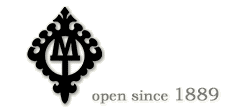The holdings of the Tatra Museum germinated from a natural history collection of 351 stuffed birds and 54 stuffed mammals purchased from forester Antoni Kocjan skilled in animal stuffing, and Tytus Chałubiński’s donation of a herbarium of moss species and vascular plants, plus a set of Tatra rocks. As a complement to the moss herbarium, Chałubiński’s heirs donated to the museum a valuable collection of bryological books (bryology is the study of mosses), published in the Polish and foreign languages. From 1888, the zoological, botanical and geological collections expanded systematically to come to almost 70 000 items at the moment of writing. For years scholars have used them in their research in various fields. The moss collection donated by T. Chałubiński is among the highlights. So are, for their historical value, nine albums of nine hundred species of vascular plants donated to the museum at the beginning of its operation by the Physiographic Committee of the Academy of Science and Letters in Cracow. Specimens for the collection were gathered in 1869–87 (in the Tatra Mountains and other areas) by the zoologist Władysław Kulczyński. The outstanding lichenologist Józef Motyka’s lichen collection is very valuable. The museum’s natural history collection also includes herbariums created by biologists closely connected with the institution: Konstanty Stecki, Irena Domaniewska and Zofia Radwańska-Paryska, in addition to the contemporary herbariums by botanists Zbigniew and Halina Mirek, Urszula Bielczyk, Anna Ronikier, and Adam Flakus.
The zoological collection embraces specimens originating in the areas of the Tatra Mountains, the region of Skalne [Rocky] Podhale, the Orawa-Nowy Targ Valley, and the Pieniny Mountains. Here the highlights include Antoni Kocjan’s ornithological collection, Stanisław Batkowski’s collection of the Macrolepidoptera of the Tatra Mountains and the mountain-foot area, plus Józef Fudakowski’s collection of the Tatra dragonflies. The zoological collection also includes seven thousand bones of the cave bear, mostly of the Magurska Cave in the Tatra Mountains.
The geological collection consists of almost 2 800 typical rocks, minerals and fossils of the entire region of the Tatra Mountains and the mountain-foot area. The museum’s geological holdings have a considerable scholarly value and a large part of the items are displayed at a permanent exhibition. They mostly document research on the geology of the Tatra Mountains in the past and at present, credit for which goes to outstanding scholars including Józef Morozewicz, Władysław Pawlica, Mieczysław Limanowski, Zbigniew Wójcik, Jerzy Lefeld and Andrzej Gaździcki. The fine set of marine fossils (ammonites, sea urchins, molluscs, and snails among others) assembled by Edward Passendorfer is quite distinct.
Modernized in 2007, the permanent natural history exhibition in the main building of the Tatra Museum offers an insight into the geological structure and animated nature of the Tatra Mountains.















